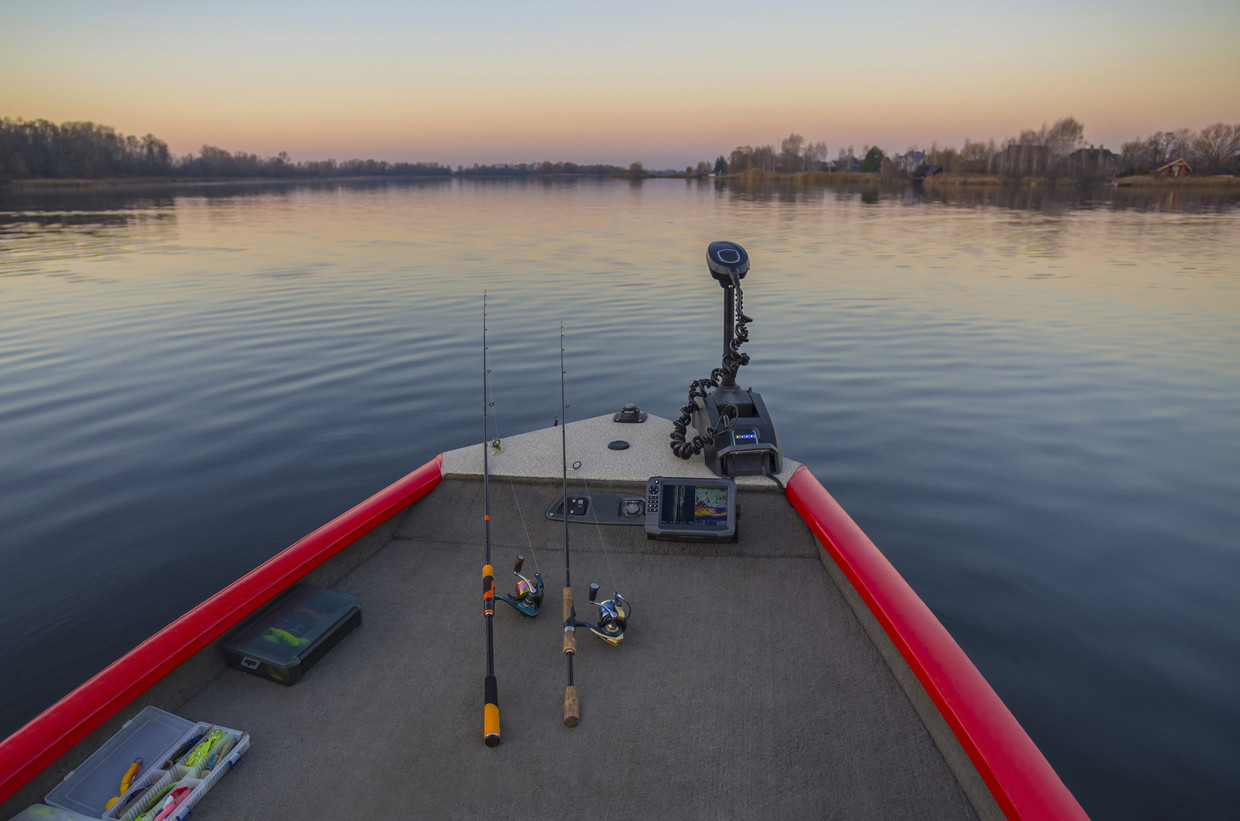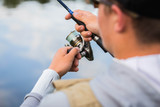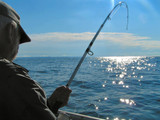Trolling Motor and Fish Finder Connection Guide
A fully integrated fishing system that combines your trolling motor and fish finder can mean more success on the water and help you land bigger catches. Syncing these devices allows you to access various features, such as Spot Lock, for precise positioning and enhanced maneuverability, making fishing easier and more enjoyable on the water.
Explore the benefits of connecting your trolling motor and fish finder, and learn how to maximize your fishing performance by integrating these two essential pieces of fishing gear.
Why You Need to Connect Your Trolling Motor and Fish Finder?
Trolling motors enhance your steering, maneuverability, and positioning far beyond what you’d achieve with paddling or an outboard motor. Integrating a trolling motor with your fish finder unlocks advanced features that improve your fish-finding capabilities.
Key advantages of linking these devices include:
- View sonar readings. Trolling motors with integrated transducers allow you to access the sonar through your fish finder display rather than using a separate transducer, providing greater convenience without installing additional components.
- Enhanced GPS capabilities. Networked systems like the i-Pilot and i-Pilot Link allow you to control the trolling motor from the fish finder screen. You can also sync GPS coordinates, enabling features like pattern fishing along contours, following custom routes, and quicker navigation between waypoints.
- Improved efficiency. With all systems integrated, you benefit from preloaded lake maps, autopilot settings, and hands-free control so that you can spend more time fishing and less time maneuvering your boat or monitoring equipment.
- Precise positioning. Networked GPS systems provide accurate real-time boat positioning, even without a cellular signal. This allows you to return to productive fishing spots, drifts, or structures without dropping physical anchor points.
Components Needed for Trolling Motor and Fish Finder Connection
To enable the connectivity between your trolling motor and fish finder, you will need the following components:
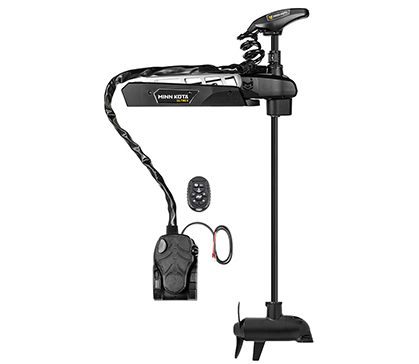
Trolling Motor System:
- Motor. The motor will need a model equipped with integrated sonar transducer capabilities and built-in GPS/network connectivity. Popular options include Minn Kota Ultrex QUEST 90/115, Terrova QUEST 90/115, and Minn Kota Ulterra 112.
- Mount. Choose a sturdy transom mount or bow mount specifically designed for your motor model. This attaches the motor securely to your boat.
- Battery. Invest in powerful marine batteries between 24V-36V with sufficient capacity for extended trips. Maintain the batteries properly to support the motor and fish finder system.
- Accessories. Purchase accessories like hand or foot control, cables, wiring diagram, remote, and installation hardware.
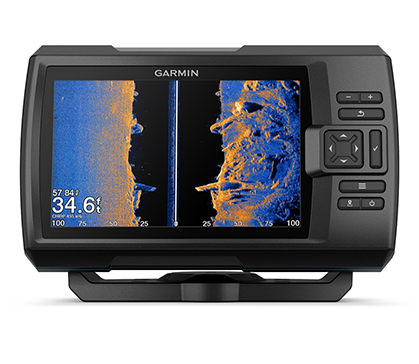
Fish Finder System:
- Head unit. Ensure the main display is equipped with Wi-Fi/Bluetooth and Ethernet connectivity if connecting via cable. Waterproof marine models like the Garmin Striker Vivid offer maximum reliability.
- Transducer. For models without integrated transducers, mount an external transducer on the hull.
- Wiring. Ensure you have power, transducer, and networking cables, and use stranded, marine-grade wiring to prevent corrosion.
- Accessories. Check that you have networking adapters, wiring accessories, transducer mounts, and protective cases, as applicable.
Additional Equipment:
- Electrical wiring tools. Wire strippers, crimpers, connectors, fuses, cable clamps, and other wiring supplies.
- Digital multimeter. Diagnose electrical issues and confirm proper connections.
- Cable splicing accessories. Adapters, sealant, and junction boxes to integrate cables into the system.
- Zip ties/mounting tape. Secure excess cables neatly along the boat and motor and prevent snags.
Step-by-Step Guide to Connect Trolling Motor and Fish Finder
Properly connecting your trolling motor and fish finder involves careful installation and setup to enable communication between the systems. Follow these key steps for a smooth integration:
Locating the Transducer on the Trolling Motor
The integrated transducer on the trolling motor is typically located on the lower prop casing. This allows it to be immersed in the water for optimal sonar readings.
- Consult your trolling motor manual to identify the exact transducer location. There may be a wiring harness or connector visible.
- Some models, like the Minn Kota Ultrex, have the transducer on the bottom prop cover behind a protective insert. Remove the cover to access it.
- On some other types of motors, the transducer wires protrude from the wire access hole in the prop housing.
Running the Fish Finder Cables through the Trolling Motor
Fish finder display units are often mounted in the dash while trolling motors are at the bow or stern. This means cables must be routed through the boat to connect them.
- Run the transducer cable from the fish finder, under the gunwale, and along the floor toward the trolling motor.
- Use adhesive mounts or cable clamps to securely fasten the cable every 18”-24” along the route.
- Pull the cable up through the wire channel or access hole in the trolling motor mount.
- Connect the transducer wire to the output cable from the integrated transducer inside the mount.
- Use waterproof tape and sealant at junctions to prevent water intrusion into connectors.
Connecting the Fish Finder Display to the Trolling Motor
With the transducer cables linked, you also need to connect the fish finder unit to the trolling motor via the network.
For Wired Ethernet Connection:
- Run a Cat5e or Cat6 Ethernet cable from the network port on the trolling motor to the fish finder.
- Plug the connectors securely into the ports on both devices. You’ll hear a click when they are fully engaged.
- Fasten the cable neatly along the route using mounts or cable tracks and avoid tight bends.
For Wireless Network:
- Enable the Wi-Fi on the fish finder and connect it to the trolling motor wireless access point using the credentials provided.
- Consult your manuals to ensure both devices are on the same wireless network.
Completing the fish finder and trolling motor connections lets you power up and sync the integrated system.
Troubleshooting Trolling Motor and Fish Finder Connection Issues
Despite the best planning, you may encounter technical issues getting your trolling motor and fish finder to interface properly. Try these troubleshooting tips to get the two systems communicating smoothly:
- No sonar readings. Ensure the transducer cable connections are secure, inspect them for damage, and confirm the correct sonar frequency (50/200 kHz).
- No network link. Check network cable connections, use Cat 5e cables or higher, update firmware, and reset accessories.
- GPS/sonar interference. Increase the distance between devices, choose alternative sonar channels, and check the GPS antenna connections.
- Spotty readings. Test the transducer in water, clean it thoroughly, and adjust the angle and depth for optimal performance.
- Voltage issues. Verify proper voltage supply to the trolling motor and fish finder, addressing any fluctuations for consistent operation.
Safety Guidelines When Connecting Trolling Motor and Fish Finder
Although connecting your trolling motor with your fish finder brings numerous benefits, safety should be your primary concern:
- Physical safety. Prioritize the safety of everyone on board by avoiding moving parts on the motor. To avoid entanglements, always secure long hair and loose clothing. Protect against electrical shocks by carefully handling cables, using grommets when wiring, and keeping your hands away from the motor while running.
- Equipment safety. Safeguard your equipment by choosing marine-grade accessories tailored for specific components. To avoid overheating, ensure the wiring is correctly sized for the amperage and properly fused near the power source. Always adhere to connection protocols and disconnect your systems from power before servicing any parts.
- Maintenance. After each use, help your trolling motor last longer by lubricating the lower unit and rinsing thoroughly with fresh water to eliminate salt and debris buildup. Regularly check battery terminals and wiring for corrosion, clean monthly, and update software and firmware for optimal performance.
When issues occur with your integrated system, always consult your equipment manuals for specific troubleshooting tips and have electronics installed or repaired only by authorized marine technicians.
Upgrade Your Fishing Adventure With FISH307
Maximize your time on the water by linking your trolling motor and fish finder. Contact FISH307 for advice and guidance on integrated fishing systems.
Our experienced team can help you create a cutting-edge fishing setup with the latest trolling motors, fish finders, and accessories. Explore the complete range of advanced networking options for your fishing gear today at FISH307.
Recent Posts
-
Best Time To Go Fishing
Finding the perfect time to go fishing can increase your chances of a successful catch. Whether y
-
Saltwater Fishing Tips
Saltwater fishing combines skill, patience, and a bit of luck for limitless adventures. From the


